-
 bitcoin
bitcoin $121833.232455 USD
-0.63% -
 ethereum
ethereum $4394.437030 USD
-2.00% -
 tether
tether $1.000570 USD
0.04% -
 bnb
bnb $1255.553465 USD
-3.73% -
 xrp
xrp $2.814944 USD
-1.59% -
 solana
solana $221.835346 USD
-2.40% -
 usd-coin
usd-coin $0.999869 USD
0.01% -
 dogecoin
dogecoin $0.249495 USD
-1.32% -
 tron
tron $0.336905 USD
-1.24% -
 cardano
cardano $0.816464 USD
-1.69% -
 chainlink
chainlink $22.130946 USD
-1.27% -
 hyperliquid
hyperliquid $44.208522 USD
-3.46% -
 ethena-usde
ethena-usde $1.000521 USD
0.02% -
 sui
sui $3.422897 USD
-2.51% -
 stellar
stellar $0.380164 USD
-1.31%
Is it reliable to buy when the moving average crosses? How to confirm the validity of the signal?
Moving average crossovers signal potential trends, but traders should confirm with volume, momentum, price patterns, and multiple time frames for reliability.
May 22, 2025 at 04:43 am
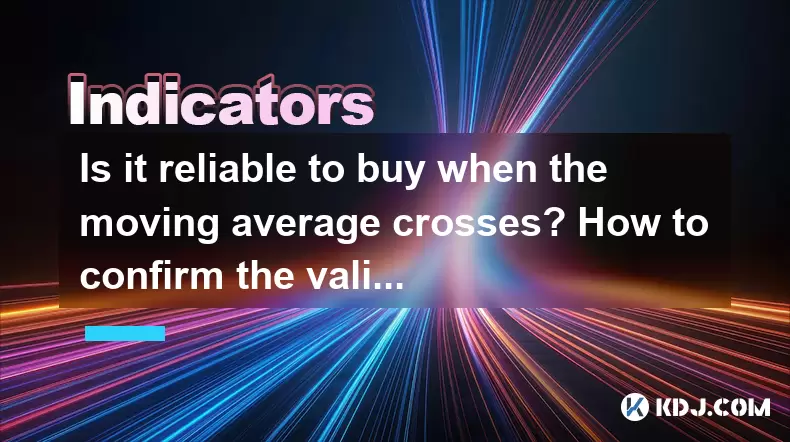
Is it reliable to buy when the moving average crosses? How to confirm the validity of the signal?
The concept of moving average crossovers is a popular technical analysis tool used by many cryptocurrency traders to identify potential buy and sell signals. The basic idea is that when a shorter-term moving average crosses above a longer-term moving average, it may signal a bullish trend, suggesting a good time to buy. Conversely, when the shorter-term moving average crosses below the longer-term moving average, it may indicate a bearish trend, suggesting a time to sell. However, the reliability of these signals can vary, and traders often need additional methods to confirm their validity.
Understanding Moving Averages and CrossoversMoving averages are calculated by taking the average price of a cryptocurrency over a specific period. The most commonly used moving averages in trading are the Simple Moving Average (SMA) and the Exponential Moving Average (EMA). The SMA gives equal weight to all prices in the period, while the EMA places more weight on recent prices, making it more responsive to new information.
A crossover occurs when two moving averages of different lengths intersect. For example, a common strategy is to use a 50-day SMA and a 200-day SMA. When the 50-day SMA crosses above the 200-day SMA, it is called a 'golden cross,' which is considered a bullish signal. Conversely, when the 50-day SMA crosses below the 200-day SMA, it is known as a 'death cross,' which is seen as a bearish signal.
Factors Affecting the Reliability of Moving Average CrossoversThe reliability of moving average crossovers can be influenced by several factors, including the time frame used, market volatility, and the specific cryptocurrency being analyzed. Shorter time frames can generate more frequent signals but may also result in more false positives. Longer time frames may produce fewer, more reliable signals but could lead to missed opportunities.
Market volatility can also impact the effectiveness of moving average crossovers. In highly volatile markets, moving averages may produce more whipsaws, where the price crosses the moving averages multiple times in a short period, leading to false signals. Conversely, in less volatile markets, moving average crossovers may be more reliable.
Confirming the Validity of Crossover SignalsTo increase the reliability of moving average crossover signals, traders often use additional technical indicators and analysis methods to confirm the validity of the signals. Here are some common methods:
Volume AnalysisOne way to confirm a moving average crossover signal is by analyzing trading volume. A bullish crossover accompanied by increasing volume can be a stronger signal than one with declining volume. Conversely, a bearish crossover with high volume can indicate stronger selling pressure.
- Check the trading volume on the chart
- Compare the volume before and after the crossover
- Look for a significant increase in volume to confirm the signal
Momentum indicators, such as the Relative Strength Index (RSI) or the Moving Average Convergence Divergence (MACD), can help confirm the strength of a trend. A bullish crossover with a rising RSI or a bullish MACD signal can provide additional confirmation of a potential uptrend.
- Add the RSI or MACD indicator to your chart
- Observe the RSI for overbought or oversold conditions
- Check for bullish or bearish MACD crossovers
Analyzing price patterns and identifying key support and resistance levels can also help confirm moving average crossover signals. A bullish crossover near a strong support level or after a bullish price pattern, such as a double bottom, can increase the likelihood of a successful trade.
- Identify key support and resistance levels on the chart
- Look for bullish or bearish price patterns
- Confirm the crossover signal with the price action at these levels
Candlestick patterns can provide additional confirmation of moving average crossover signals. For example, a bullish crossover accompanied by a bullish engulfing pattern or a hammer candlestick can strengthen the buy signal.
- Analyze the candlestick patterns around the crossover
- Look for bullish patterns like engulfing, hammer, or piercing line
- Confirm the signal with the presence of these patterns
Another method to confirm moving average crossover signals is to analyze the same crossover on multiple time frames. If a bullish crossover occurs on both a daily and a weekly chart, it may provide stronger confirmation of an uptrend.
- Open charts for different time frames (e.g., daily, weekly)
- Identify the crossover on each time frame
- Confirm the signal if the crossover occurs on multiple time frames
Let's walk through a practical example of how to confirm a moving average crossover signal using the methods discussed above.
Suppose you are analyzing the price chart of Bitcoin (BTC) and notice a golden cross, where the 50-day SMA crosses above the 200-day SMA. To confirm this bullish signal, you can follow these steps:
- Volume Analysis
- Check the trading volume on the chart around the time of the crossover.
- If the volume is increasing, it can confirm the strength of the bullish signal.
- Momentum Indicators
- Add the RSI indicator to the chart and observe its value.
- If the RSI is rising and not in overbought territory, it can provide additional confirmation of the bullish trend.
- Add the MACD indicator and look for a bullish crossover, which can further confirm the signal.
- Price Patterns and Support/Resistance Levels
- Identify key support levels on the chart.
- If the golden cross occurs near a strong support level, it can increase the reliability of the signal.
- Look for bullish price patterns, such as a double bottom, which can provide further confirmation.
- Candlestick Patterns
- Analyze the candlestick patterns around the time of the crossover.
- If a bullish engulfing pattern or a hammer candlestick appears, it can strengthen the buy signal.
- Using Multiple Time Frames
- Open both a daily and a weekly chart of BTC.
- If the golden cross occurs on both time frames, it can provide stronger confirmation of the bullish trend.
By combining these methods, you can increase the reliability of the moving average crossover signal and make more informed trading decisions.
Frequently Asked QuestionsQ1: Can moving average crossovers be used for all cryptocurrencies?A1: Moving average crossovers can be used for most cryptocurrencies, but their effectiveness may vary depending on the specific cryptocurrency's price behavior and market conditions. It's essential to test and validate the strategy on historical data for each cryptocurrency before applying it in live trading.
Q2: How often should I check for moving average crossovers?A2: The frequency of checking for moving average crossovers depends on the time frame you are using. For shorter time frames, such as hourly or 4-hour charts, you may need to check more frequently, while for longer time frames like daily or weekly charts, checking once a day or once a week may be sufficient.
Q3: Can I use moving average crossovers as a standalone strategy?A3: While moving average crossovers can be a useful tool, they are generally more effective when used in conjunction with other technical indicators and analysis methods. Relying solely on moving average crossovers may lead to false signals and less reliable trading decisions.
Q4: Are there any risks associated with using moving average crossovers?A4: Yes, there are risks associated with using moving average crossovers. False signals, whipsaws, and market volatility can lead to losses if not managed properly. It's crucial to use risk management techniques, such as setting stop-loss orders and position sizing, to mitigate these risks.
Disclaimer:info@kdj.com
The information provided is not trading advice. kdj.com does not assume any responsibility for any investments made based on the information provided in this article. Cryptocurrencies are highly volatile and it is highly recommended that you invest with caution after thorough research!
If you believe that the content used on this website infringes your copyright, please contact us immediately (info@kdj.com) and we will delete it promptly.
- TT Jagannathan: The Prestige Founder Who Revolutionized Indian Kitchens
- 2025-10-10 12:25:15
- Bitcoin's Open Interest Dip: What's the Deal?
- 2025-10-10 12:25:15
- Dogecoin, Litecoin, and BlockDAG: Crypto's Old Guard Meets the New Kid
- 2025-10-10 12:30:02
- MOBU BTC: Why MoonBull Could Be Your Next Crypto Obsession
- 2025-10-10 12:45:14
- Coinbase, Staking, and the Crypto Scene: A New York State of Mind
- 2025-10-10 12:30:02
- Chainlink, Reserve, LINK Price: Decoding the Signals
- 2025-10-10 10:45:14
Related knowledge
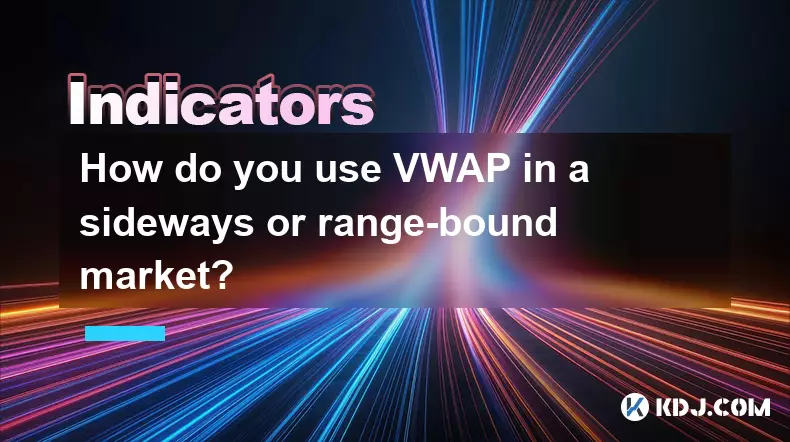
How do you use VWAP in a sideways or range-bound market?
Oct 10,2025 at 10:00am
Understanding VWAP in Range-Bound Conditions1. The Volume Weighted Average Price (VWAP) serves as a benchmark for intraday trading, combining both pri...
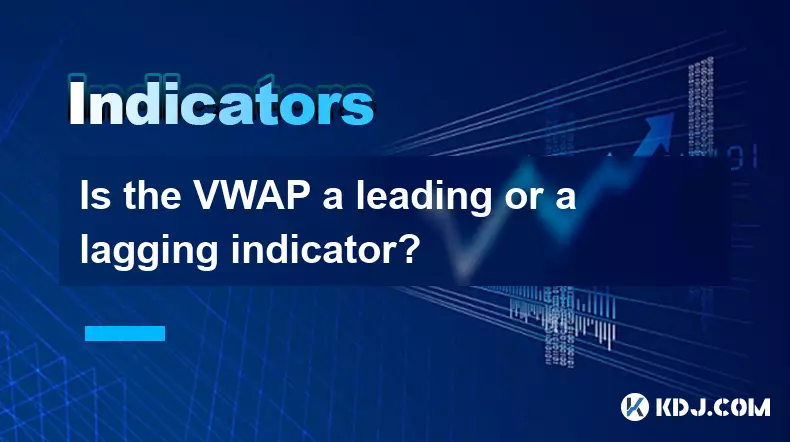
Is the VWAP a leading or a lagging indicator?
Oct 10,2025 at 09:37am
Understanding VWAP in the Context of Crypto Trading1. The Volume Weighted Average Price (VWAP) serves as a benchmark for traders analyzing intraday pr...
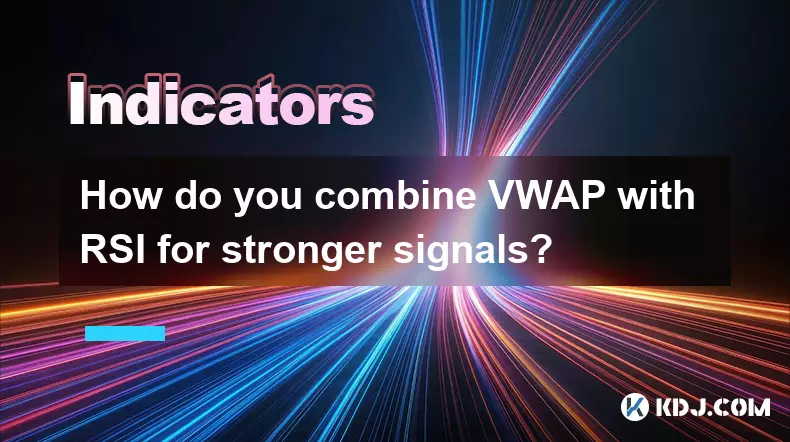
How do you combine VWAP with RSI for stronger signals?
Oct 10,2025 at 12:36pm
Understanding the Synergy Between VWAP and RSI1. The Volume Weighted Average Price (VWAP) serves as a benchmark for institutional traders, reflecting ...
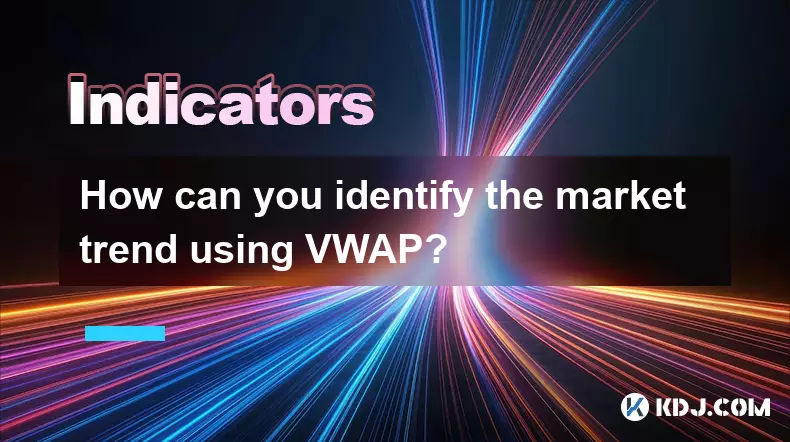
How can you identify the market trend using VWAP?
Oct 10,2025 at 01:00pm
Understanding VWAP and Its Role in Market Analysis1. The Volume Weighted Average Price (VWAP) is a trading benchmark that represents the average price...
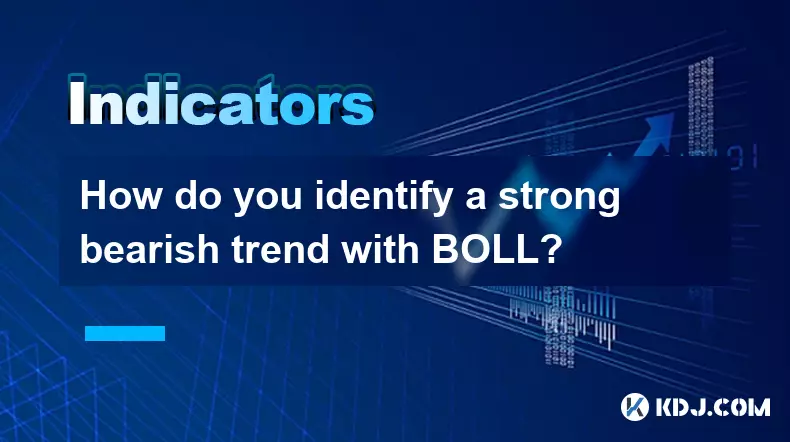
How do you identify a strong bearish trend with BOLL?
Oct 10,2025 at 04:18am
Understanding Bollinger Bands in Bearish Market ConditionsBollinger Bands consist of three lines: the middle band, typically a 20-period simple moving...
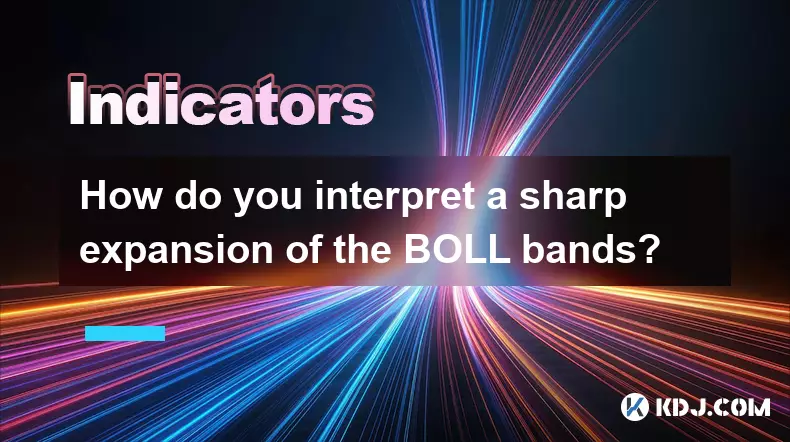
How do you interpret a sharp expansion of the BOLL bands?
Oct 10,2025 at 03:01am
Understanding BOLL Band Expansion in Cryptocurrency Trading1. The Bollinger Bands (BOLL) indicator consists of three lines: the middle band, typically...

How do you use VWAP in a sideways or range-bound market?
Oct 10,2025 at 10:00am
Understanding VWAP in Range-Bound Conditions1. The Volume Weighted Average Price (VWAP) serves as a benchmark for intraday trading, combining both pri...

Is the VWAP a leading or a lagging indicator?
Oct 10,2025 at 09:37am
Understanding VWAP in the Context of Crypto Trading1. The Volume Weighted Average Price (VWAP) serves as a benchmark for traders analyzing intraday pr...

How do you combine VWAP with RSI for stronger signals?
Oct 10,2025 at 12:36pm
Understanding the Synergy Between VWAP and RSI1. The Volume Weighted Average Price (VWAP) serves as a benchmark for institutional traders, reflecting ...

How can you identify the market trend using VWAP?
Oct 10,2025 at 01:00pm
Understanding VWAP and Its Role in Market Analysis1. The Volume Weighted Average Price (VWAP) is a trading benchmark that represents the average price...

How do you identify a strong bearish trend with BOLL?
Oct 10,2025 at 04:18am
Understanding Bollinger Bands in Bearish Market ConditionsBollinger Bands consist of three lines: the middle band, typically a 20-period simple moving...

How do you interpret a sharp expansion of the BOLL bands?
Oct 10,2025 at 03:01am
Understanding BOLL Band Expansion in Cryptocurrency Trading1. The Bollinger Bands (BOLL) indicator consists of three lines: the middle band, typically...
See all articles

























![Web3 Crypto Market Morning Report: Fomo on the Bnb chain continues, Binance launches the chain-sweeping platform Meme Rush, the market value of Xiuxian exceeds 40 million U.S. dollars, OK Binance business war begins [Vic TALK Issue 1437] Web3 Crypto Market Morning Report: Fomo on the Bnb chain continues, Binance launches the chain-sweeping platform Meme Rush, the market value of Xiuxian exceeds 40 million U.S. dollars, OK Binance business war begins [Vic TALK Issue 1437]](/uploads/2025/10/10/cryptocurrencies-news/videos/web-crypto-market-morning-report-fomo-bnb-chain-continues-binance-launches-chainsweeping-platform-meme-rush-market-xiuxian-exceeds-dollars-binance-business-war-vic-talk-issue/68e861c5dbd1c_image_500_375.webp)
















































